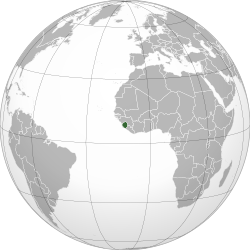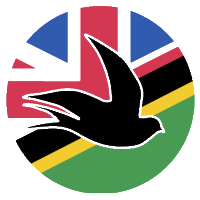Sierra Leone

Sierra Leone health care system provides care to a population of 8.4 million (12.5% that of the UK) over a land mass that is approximately four times smaller than the UK. It does this with very limited resources.
Sierra Leone is a West African country with a young, rapidly growing population of 8 million. The country experienced a brutal rebel war in the 1990s, resulting in damage to vital infrastructure and loss of professional workers. Currently ranked 182/189 countries on the Human Development Index, more than half the population live in poverty. The majority live in rural areas, many of which are hard to reach. There is also significant wealth inequality, in common with many LMICs.
Having been decimated by the civil war, Sierra Leone’s healthcare system then suffered further significant setbacks during the deadly 2014-15 Ebola epidemic, with deaths in the healthcare workforce disproportionate to the general population.
About 50% of Sierra Leone’s hospitals are government facilities at district and regional level. The rest are a mix of variably sized, private not for profit (NGO hospitals), and small private for-profit hospitals (many of which also provide compassionate care). Approximately 7% of the national budget is allocated to health, but with 45% of total health expenditure being patient out-of-pocket spending. Hospitals face severe shortages of basic equipment (e.g. sutures, drugs, and electricity supply).
The surgical workforce is a mixture of medically trained staff with variable surgical training, overseas doctors, and surgical health officers. The number of surgical providers in 2019 was 313 fulltime providers equivalent to 4.4 per 100,000 population, well below the 20 per 100,000 considered necessary for delivery of essential surgical care.
Hernia is common in Sierra Leone and largely untreated. Household survey has shown 7% of the male population have a reducible groin swelling, but only 22% of these undergo surgery. Lack of money is the principal barrier. Untreated hernias grow large and 20% of those with them cannot perform normal work because of the hernia.
Mesh is hard to obtain and, where available, prohibitively expensive for most. Currently when hernias are repaired, it is mainly using the Bassini sutured method, which is far from ideal given the chronicity and challenging size of many hernias.
Having heard of the early successes of the Tanzania National Mesh Hernia Project, a team in Koidu Government Hospital were keen to set up a sister project in Sierra Leone. SWIFTSS were keen to enable this and after some careful planning and preparations, the Sierra Leone Mesh Hernia Pilot Project began in June 2023. The overwhelming success of this workstream has led to a complete rebranding of the mesh hernia work, now called the Affordable Mesh Hernia Surgery Initiative – to reflect its increasingly international nature.
